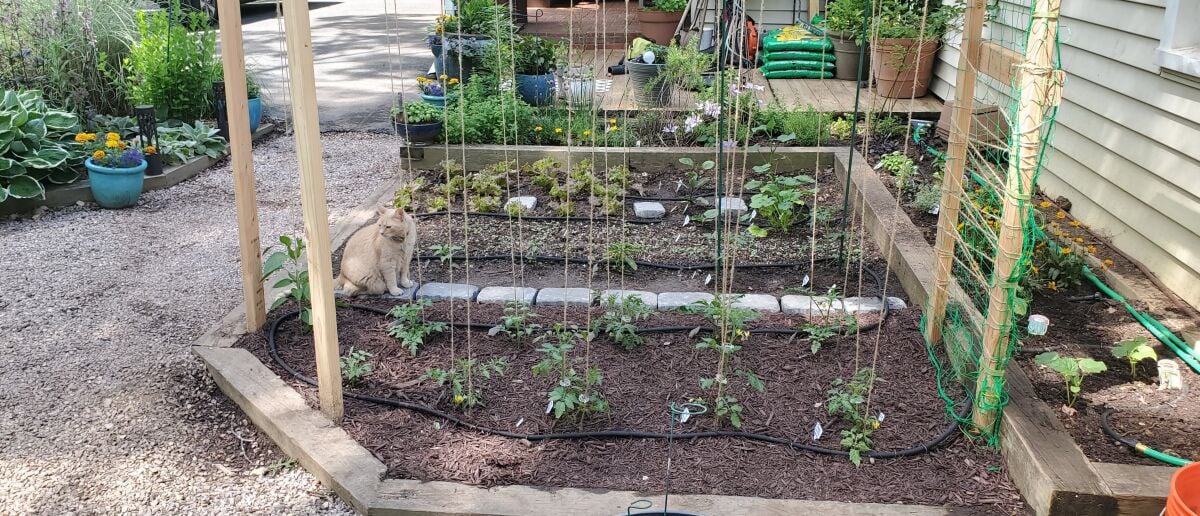Did you know that gardening can boost your mood, reduce stress, and even improve air quality around your home?
Gardening is one of the most rewarding hobbies you can start, offering relaxation, fresh produce, and a deeper connection to nature. Whether you’re a complete beginner or have dabbled in gardening before, planning is the key to success. From understanding soil conditions to picking the right plants, his guide will help you create a sustainable garden layout plan that fits your lifestyle.
What You’ll Learn in This Guide
- How to assess your space and environment
- Understand and test your soil
- Different types of gardens
- Choosing the right plants for your region
- Create a garden layout plan of where to plant what
- Step-by-step planning for long-term success
Planning a garden can be exciting but overwhelming for first-timers. By breaking the process into clear steps, you can plan your garden with confidence.
Step 1: Assessing Space and Sunlight
Before you dig in, evaluate your available space and light conditions.
- Start small and be realistic about the time and effort you can commit. If you have limited space or time, consider beginning with a few containers or a small raised bed rather than a large in-ground plot.
- Track the sunlight your potential garden area receives throughout the day, since sunlight will dictate what plants will thrive. Take photos or notes every couple of hours on a sunny day to see when each part of your space is in sun or shade.
Sunlight Categories
- Full sun: At least 6 hours of direct sun daily (most vegetables and sun-loving flowers need this).
- Partial sun/partial shade: About 4–6 hours of sun (many herbs, root veggies, and certain ornamentals do fine with half-day sun).
- Full shade: Less than 4 hours of direct sun (choose shade-tolerant plants for these areas).
Matching plants to their ideal sun exposure helps ensure success and avoids common gardening mistakes.
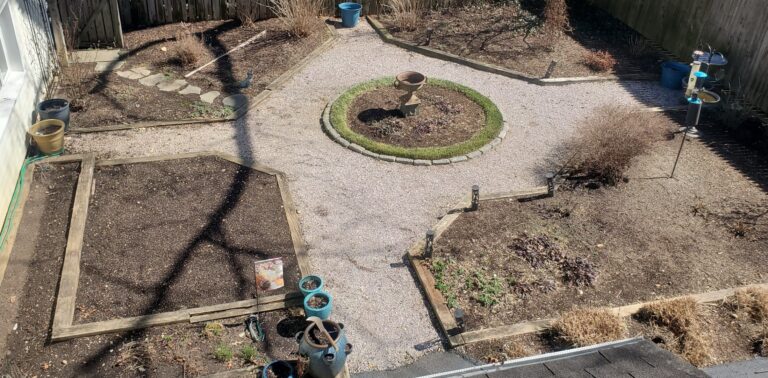
Step 2: Understanding Different Soil Types
Healthy soil is the foundation of a thriving garden. Take time to get to know what’s underfoot in your garden or in the potting mix you’ll use.
Soil is typically categorized by texture:
| Soil Type | Characteristics | Improvement Suggestions |
|---|---|---|
| Clay | Heavy, nutrient-rich, drains slowly, sticky when wet | Mix in compost, leaf mold, or coarse sand to improve drainage |
| Sandy | Gritty, fast-draining, low in nutrients and moisture retention | Add compost or aged manure to help hold water and nutrients |
| Silty | Fine-textured, holds moisture well, prone to compaction | Work in organic matter to maintain crumb structure |
| Loamy | Balanced mix of sand, silt, and clay, retains moisture yet drains well | Add organic matter periodically to keep it rich |
| Peaty | High in organic matter, moisture-rich, often acidic | Ensure good drainage, add lime if soil is too acidic |
| Chalky | Alkaline, often stony, drains fast | Add organic matter to improve water retention and nutrient availability |
Simple Soil Test
To identify your soil type, try the soil ball test:
- Take a handful of moist (not soaking) soil.
- Roll it into a ball in your palm.
- Observe the texture:
- If it crumbles apart, it’s sandy.
- If it forms a sticky ball that holds its shape, it’s clay.
- If it forms a ball but breaks apart with a poke, it’s loamy.
Most soils benefit from adding organic matter (compost, well-rotted manure, leaf mulch), which improves nutrient content and structure.
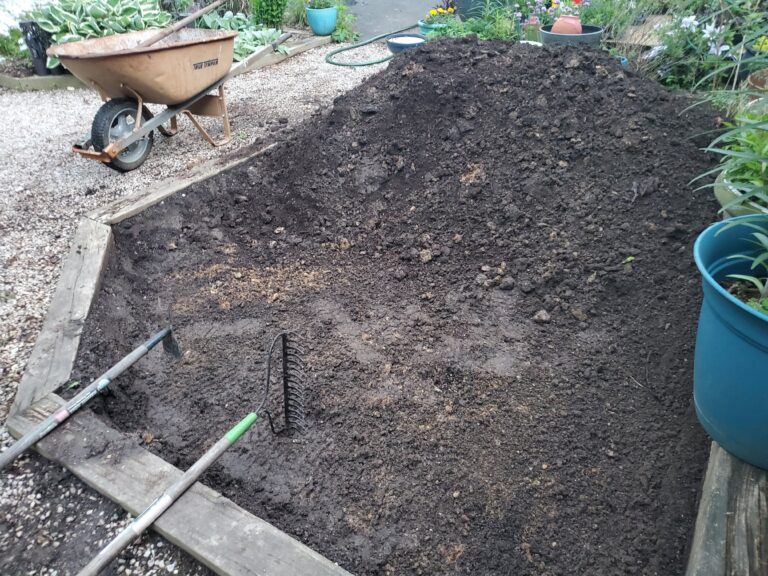
Step 3: Choosing a Garden Type
Choosing a garden type that fits your space, needs, and lifestyle will set you up for success.
Keep in mind that this is your garden. Feel free to mix and combine whatever fits your lifestyle and garden goals.
Garden Structure Options
Whether you have all the space in the world or just a simple balcony, there are multiple ways to create a garden.
Here are a few options:
| Garden Structure | Pros | Cons |
|---|---|---|
| In-Ground Garden | Natural look, deep root growth, budget-friendly | Requires soil preparation, more weeds, affected by poor drainage |
| Raised Bed Garden | Great drainage, easy access, warms up faster in spring | Requires building materials, can dry out faster |
| Container Garden | Highly flexible, portable, low maintenance | Limited root space, requires frequent watering |

Garden Types & Purpose
There are many different types of gardens to choose from that serve different purposes. Think about what you want from your garden and the purpose it serves.
Here are few popular types of Gardens to get you started.
| Garden Type | Description |
|---|---|
| Vegetable/Edible Gardens | Grow vegetables, fruits, and herbs for home cooking |
| Pollinator/Native Gardens | Support bees, butterflies, and hummingbirds with nectar-rich native flowers |
| Ornamental Flower Gardens | Emphasizes beauty with colorful flowers, shrubs, and bulbs |
| Sustainable/Eco-Friendly Gardens | Focus on conservation using composting, rainwater harvesting, and drought-tolerant plants |
| Cat Garden | Selection of Cat friendly plants for cats to explore and relax |
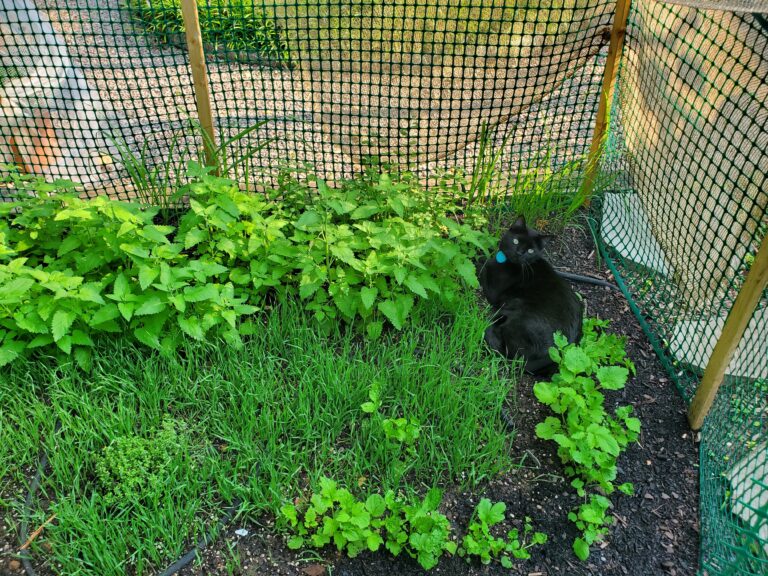
Step 4: Selecting Plants for Different Gardens and Locations
Choosing the right plants is the fun part – this is where your garden comes to life with color, texture, and hopefully robust growth. When selecting plants, consider your climate and specific location conditions, as well as the type of garden you’re planning. The East Coast (from New England down to the Mid-Atlantic) has a range of climates, but generally, gardeners deal with cold winters, warm/humid summers, and a decent amount of rainfall. Always check your USDA Hardiness Zone and choose perennials that are winter-hardy to your zone, or be prepared to treat plants as annuals if they can’t survive the winter cold.
Types of Garden Plants
When selecting what to grow in your garden layout plan, it’s helpful to start with plants that are both rewarding and beginner-friendly. This includes vegetables, herbs, and flowers that are easy to care for and thrive in most East Coast climates. Together, they can contribute to a beautiful and functional space that not only looks great but also supports pollinators and provides fresh food.
Incorporating a mix of these plant types can also set you up for companion planting—a method that pairs compatible plants to enhance growth and reduce pests.
For a starter vegetable/herb garden, go with reliable producers that thrive in the East Coast growing season.
Easy Edible Plants
- Tomatoes (cherry varieties for a quicker, abundant harvest)
- Bell peppers
- Bush green beans
- Zucchini/squash
- Cucumbers (all prefer at least 6–8 hours of sun)
Beginner-Friendly Herbs
- Basil
- Parsley
- Chives
- Oregano
- Mint (keep mint in a pot to contain it)
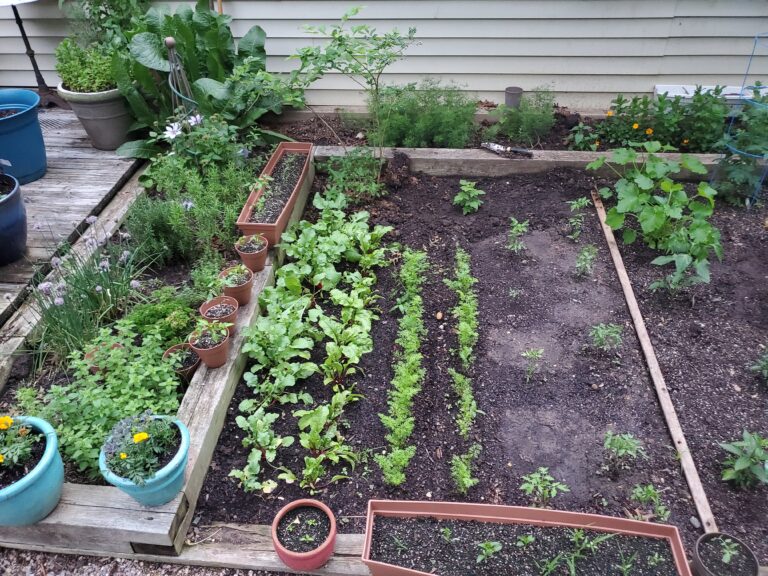
Types of Garden Flowers
There are two main categories of flowering plants to consider:
Perennials and Annuals
Perennial flowers return year after year, making them a great long-term investment. Once established, they require less maintenance and can grow larger over time, filling your garden with reliable, seasonal color. Some popular and beginner-friendly perennials include:
- Black-eyed Susan (Rudbeckia)
- Purple Coneflower (Echinacea)
- Daylilies and Iris
- Bee balm (Monarda)
- Sedum (Stonecrop)
- Astilbe, Hosta, and Heuchera (Coral Bells)
Annual flowers, on the other hand, complete their life cycle in a single growing season. They provide bold, instant color and can help fill in gaps between perennials or highlight garden borders. Good annuals for beginners include:
- Marigolds
- Zinnias
- Sunflowers
- Cosmos
By mixing perennials with well-chosen annuals, you can create a garden that has both structure and continuous color throughout the season.
Pollinator-Friendly Native Plants
In addition to annuals and perennials, native plants deserve special attention. These varieties not only add beauty but also strengthen your garden’s ecosystem. Native plants are adapted to the local climate and often require less maintenance and watering once established. They also attract beneficial pollinators like bees, butterflies, and hummingbirds, which help your entire garden thrive.
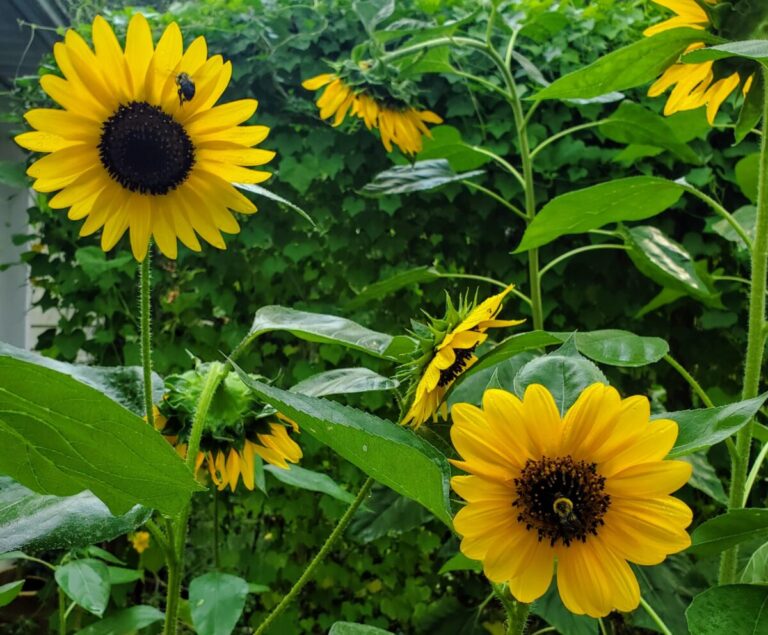
Step 5: Designing Your Garden Layout Plan
With your space, soil, and garden type in mind, it’s time to design the layout. Good garden design ensures your plants have the right spacing, the garden is visually pleasing, and maintenance is manageable.
Key Garden Design Principles
- Create Accessible Pathways – Ensure you can easily reach plants for watering, weeding, and harvesting. In larger plots, plan walking paths or stepping stones every few feet. Raised beds should be no wider than 4 feet so you can reach the center from either side.
- Use Companion Planting & Diversity – Pair plants that support each other for better growth, pest control, and higher yields.
- Good companions: Marigolds deter pests near tomatoes, basil enhances tomato flavor and repels insects.
- Bad combinations: Onions stunt bean growth, so keep them separate.
- Plan for Year-Round Growing – Use succession planting to maximize space. Example: Grow leafy greens in spring, follow with beans in summer, and plant garlic in fall.
- Height & Sunlight Considerations – Tall plants (peppers, tomatoes, sunflowers) should be at the north side to avoid shading smaller crops.
Before planting, it can help to sketch a simple map of your garden layout on paper – A well-planned garden layout ensures easy maintenance and optimal plant growth.
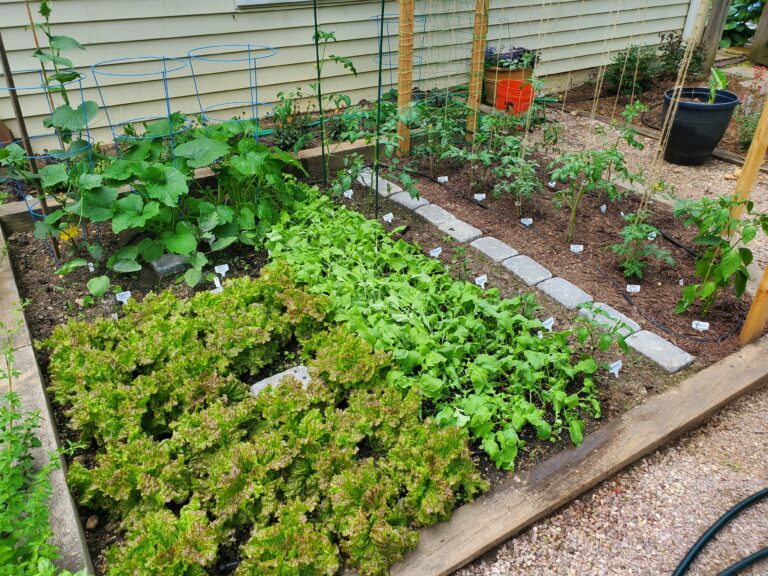
How to Create a Simple Garden Layout Plan
- Use Graph Paper or an Online Planner – Sketch your garden dimensions to scale.
- Label Key Features – Add pathways, raised beds, trellises, and composting areas to ensure your garden flows well.
- Mark Sunlight Zones – Identify full sun, partial shade, and full shade areas.
- Plan Plant Placement
- Group similar plants together and room for companion plants.
- Keep tall plants at the back (or north) so they don’t block sunlight.
- Leave room for accessibility – Ensure you can reach all plants for maintenance.
This “garden blueprint” doesn’t have to be perfect, but it serves as a game plan when you’re standing outside with a tray of seedlings ready to plant. You can always adjust as you plant, but having thought through the layout means fewer surprises (like realizing you put a tall tomato in front of your petunias which now sit in shade). Take the time to plan it out, and you’ll thank yourself later when your garden grows in harmony.
Conclusion
Gardening is an ever-evolving journey that grows with you. By carefully planning your space, choosing the right plants, and implementing thoughtful design principles, you can create a thriving and enjoyable garden that suits your needs. Whether you’re growing fresh food, attracting pollinators, or designing a peaceful retreat, each step you take brings you closer to a fulfilling gardening experience.
Next Steps: Start Planting!
- Choose a start date to prepare your space.
- Gather essential tools and materials.
- Follow your layout plan and begin planting.
By following these steps, you’ll be well on your way to growing a thriving, beautiful garden. Share your progress with fellow gardeners, ask questions, and inspire others by documenting your journey. Let us know how your dream garden is coming to life!
Stay Connected for More Gardening Tips
Want more expert gardening advice? Follow our blog for the latest gardening tips, seasonal planting guides, and inspiration to help you cultivate the perfect garden. Subscribe now and let’s grow together!
